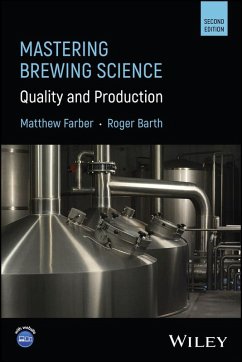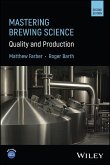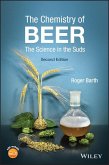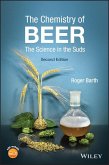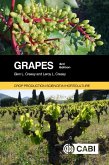Focused on brewing science, process, and quality, this is a comprehensive textbook on beer production, from the underlying biology and chemistry to process steps, packaging, testing, and service of beer and related products.
Mastering Brewing Science is a complete resource for brewing students as well as established professionals, with coverage of brewing processes, beer quality assurance, and related industries such as hop and malt preparation. The text strikes a balance among essential scientific concepts, treatment of raw materials, procedures and equipment for beer brewing, and protecting and evaluating product quality. Understanding the science of beer production will enable readers to troubleshoot problems in the brewery, a critical skill for a career in beer.
Mastering Brewing Science begins with a high-level discussion of the brewing process. Subsequent chapters review the fundamentals of biology and chemistry with application to the brewing process. The remaining material covers the processes and procedures to make quality beer and related beverages, including a focus on each of the four raw materials. Hundreds of illustrations, many in full color, explain the equipment and processes.
The newly revised and updated Second Edition of Mastering Brewing Science includes:
Mastering Brewing Science is an essential learning resource for students in brewing science or technology programs or as a valuable resource for brewing professionals.
Mastering Brewing Science is a complete resource for brewing students as well as established professionals, with coverage of brewing processes, beer quality assurance, and related industries such as hop and malt preparation. The text strikes a balance among essential scientific concepts, treatment of raw materials, procedures and equipment for beer brewing, and protecting and evaluating product quality. Understanding the science of beer production will enable readers to troubleshoot problems in the brewery, a critical skill for a career in beer.
Mastering Brewing Science begins with a high-level discussion of the brewing process. Subsequent chapters review the fundamentals of biology and chemistry with application to the brewing process. The remaining material covers the processes and procedures to make quality beer and related beverages, including a focus on each of the four raw materials. Hundreds of illustrations, many in full color, explain the equipment and processes.
The newly revised and updated Second Edition of Mastering Brewing Science includes:
- End-of-chapter review questions.
- Twenty-six "Case Studies" focused on real-world, practical problems for discussion.
- Coverage of alternative beverages including low alcohol beer, gluten-free beer, flavored malt beverages, hard seltzer, hemp beer, high-gravity brewing, and brewing with bacteria.
- Expanded coverage of water, malt, hops and yeast, each with its own chapter.
- Techniques for effective standard operating procedures (SOPs).
- Strong coverage of workplace safety throughout, with all safety coverage tabulated together in the index.
- Many procedures for beer preparation and quality testing of beer, raw materials, and packaging. All procedures are tabulated in the index.
Mastering Brewing Science is an essential learning resource for students in brewing science or technology programs or as a valuable resource for brewing professionals.
Dieser Download kann aus rechtlichen Gründen nur mit Rechnungsadresse in D ausgeliefert werden.

